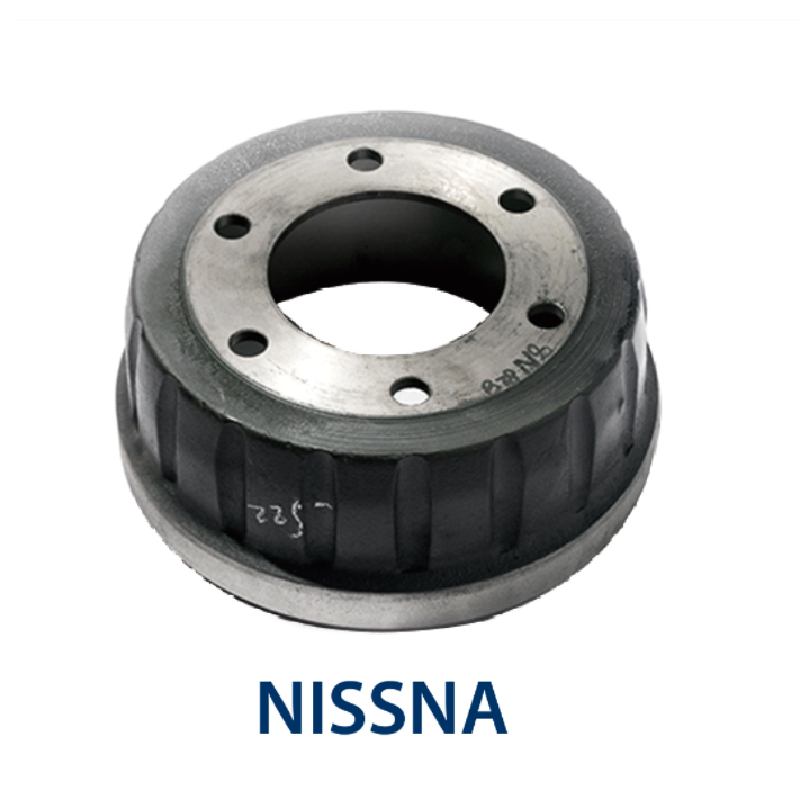Dec . 20, 2024 06:28 Back to list
Understanding the Impact of Warped Brake Drums on Vehicle Performance and Safety
Understanding Warped Brake Drums Causes, Effects, and Solutions
When discussing vehicle braking systems, enthusiasts and drivers alike often focus on brake pads and rotors. However, one critical component that sometimes gets overlooked is the brake drum—especially when it becomes warped. A warped brake drum can lead to a variety of pressing issues that not only affect the performance of the vehicle but can also pose serious safety risks. In this article, we will delve into the causes, effects, and solutions related to warped brake drums, allowing vehicle owners to better understand and address this common problem.
What is a Brake Drum?
First, let’s clarify what a brake drum is. In vehicles equipped with drum brake systems, the brake drum is a cylindrical component that houses the brake shoes. When the driver presses the brake pedal, hydraulic force is applied, pushing the brake shoes against the inner surface of the drum. This contact creates friction, slowing down the vehicle. Although drum brakes have been largely replaced by disc brake systems in modern vehicles, they remain common in certain applications, particularly in commercial vehicles and older models.
Causes of Warped Brake Drums
Warped brake drums can occur due to several reasons
1. Excessive Heat Build-Up One of the most common causes of warping is overheating. Continuous heavy braking—such as in mountainous terrain or during stop-and-go traffic—generates significant heat. If the drums exceed their operating temperature, they can change shape, leading to warping.
2. Poor Quality or Old Drums Over time, brake drums can experience wear and tear. Older drums, or those made from inferior materials, are more susceptible to warping. A lack of timely maintenance can exacerbate this issue.
3. Incorrect Installation If brake drums are improperly installed, they may not operate as intended. Misalignment or uneven tightening of the mounting bolts can lead to uneven pressure distribution, increasing the risk of warping.
4. Brake Shoe Issues Worn or improperly adjusted brake shoes can lead to uneven wear patterns on the drum. Cracked or contaminated shoes can also contribute to performance issues, resulting in overheating and potential warping.
Effects of a Warped Brake Drum
The effects of a warped brake drum can be both direct and indirect, often compromising vehicle safety
warped brake drum

1. Reduced Braking Efficiency A warped drum may not provide even contact with the brake shoes, leading to reduced braking power. This decreased efficiency may result in longer stopping distances, which can be particularly dangerous in emergency situations.
2. Vibrations and Noise One of the most noticeable symptoms of a warped brake drum is vibration felt through the brake pedal or steering wheel when braking. Additionally, it may produce grinding or squealing noises, indicating an issue that needs to be addressed.
3. Increased Wear on Components The improper functioning of a warped drum can lead to increased wear on other braking components, such as brake shoes and wheel bearings. Over time, this can result in more extensive and costly repairs.
4. Safety Hazards Ultimately, the most significant concern with a warped brake drum is the potential risk to safety. Reduced braking power, vibrations, and noise can distract the driver from their primary focus on the road. Moreover, compromised brakes increase the risk of accidents.
Solutions and Preventative Measures
Fortunately, there are ways to address and prevent warped brake drums
1. Regular Inspections Routine maintenance, including brake inspections, can catch wear and potential issues early on. Mechanics can monitor drum condition and replace them as necessary.
2. Proper Installation Ensure that any brake component installation is performed by a qualified technician. Correct alignment and torque specifications can help mitigate the risk of warping.
3. Quality Parts Investing in high-quality brake drums and shoes can reduce the likelihood of warping due to material failure or wear.
4. Driving Habits Adapting driving behaviors—such as avoiding sudden stops and minimizing prolonged heavy braking—can help keep brakes cooler and extend the life of brake components.
In conclusion, while often overlooked, the importance of maintaining the brake drum cannot be overstated. A warped brake drum can lead to significant safety concerns and costly repairs if not addressed promptly. By understanding the causes, recognizing the symptoms, and implementing preventative strategies, vehicle owners can ensure a safer driving experience and prolong the lifespan of their braking systems. Proper care and attention to all components of the braking system are essential for overall vehicle safety and efficiency.
-
Your Brake Drum Man: Quality & Performance Parts
NewsAug.21,2025
-
Explore Japan: Ultimate Travel Guide & Authentic Experiences
NewsAug.19,2025
-
Your Brake Drum Man: Premium & Reliable Brake Drums for Sale
NewsAug.18,2025
-
ROR Web Development: Build Fast, Scalable, Secure Apps
NewsAug.17,2025
-
Scania Brake Drums: OEM Quality for Optimal Safety & Durability
NewsAug.16,2025
-
R.V.I: Advanced Remote Visual Inspection for Precision
NewsAug.15,2025
